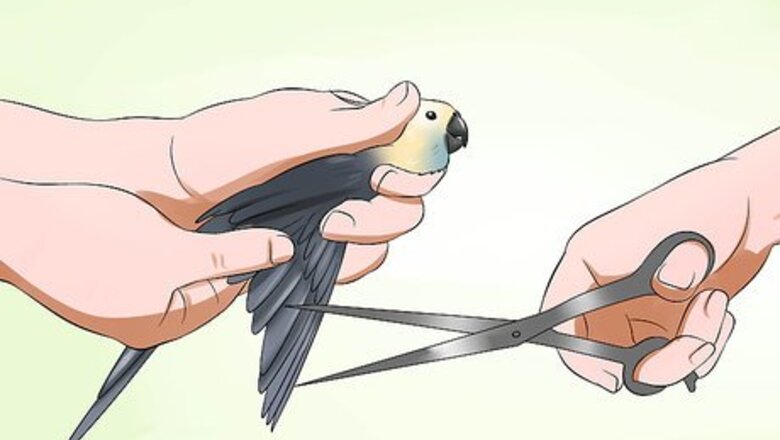
views
Preparing to Clip Your Cockatiel's Flight Feathers
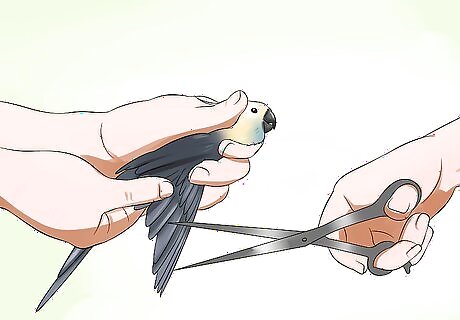
Find a partner to help you. One person should hold your cockatiel firmly and put his middle and index fingers on the sides of the bird's neck to keep her from biting.
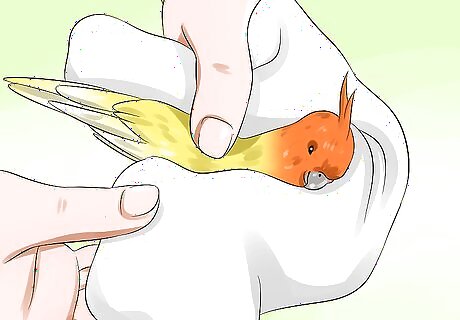
Towel your bird. If you are having trouble controlling your bird, try covering your bird with a soft, clean towel. This may calm the bird and make him easier to handle. It is a good idea to “towel train” your bird in advance, so he will be easier to deal with when you need to restrain him. Use the same towel every time, and give your bird treats on the towel. Allow him to walk underneath the towel on his own until he gets used to the towel. Do not constrict a bird's chest when restraining him with a towel. Birds need to be able to completely expand their chest in order to breathe properly.
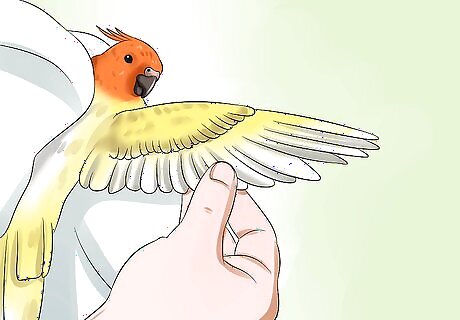
Extend your bird's wings. Have the person who is holding your cockatiel open one of her wings. Be gentle but firm with the wings, as the bones are very fragile.
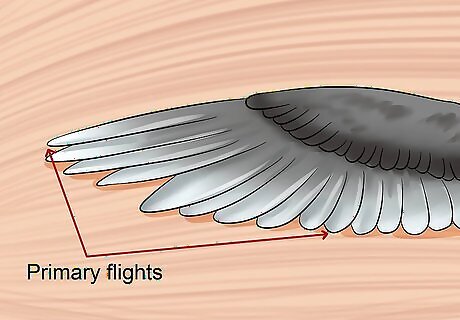
Locate the flight feathers (or primary flights). Your cockatiel's flight feathers are the long feathers at the outer edge of his wings. Do not clip any feathers that grow on the inner portion of the wing – always stop at or before the bend in the wing (the middle joint.)
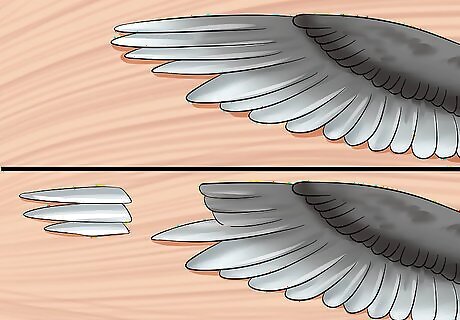
Plan which feathers to trim. Using pet nail trimmers or scissors with blunt ends, clip three or four of the primary flight feathers from each wing, beginning with the longest one and working your way in toward the bird's body. The primary flight feathers are the longest feathers at the tips of your bird's wings.
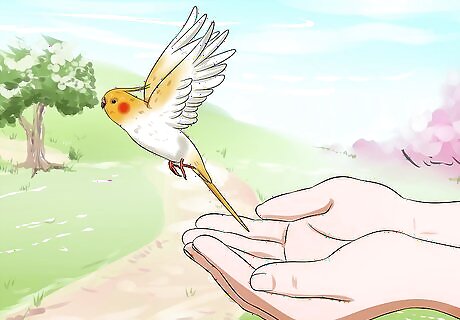
Let baby birds learn to fly before clipping. Allow baby birds several weeks to learn how to fly before you attempt to trim their flight feathers. If you clip them too soon, the birds will not develop the muscles needed to fly as adults. ”Flight” means a bird can lift herself from the ground or another surface, and can move herself through the air of her own volition. ”Gliding” means a bird can control her wings well enough to drift safely to the floor when released; however, she will not be able to lift herself off the ground or maintain flight once she is in the air.
Clipping Your Cockatiel's Flight Feathers
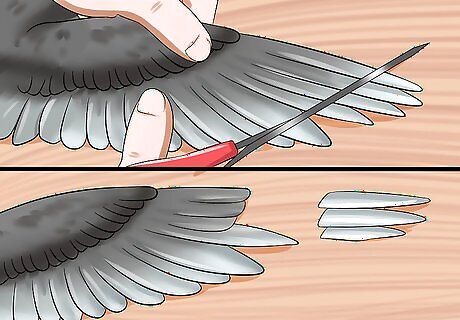
Clip each flight feather individually. A more modern technique is to clip each individual flight feather on the shaft right at the point where there are no longer any barbules. (The feathery protrusions growing from the quill, or shaft, are called barbs or barbules.) Select the flight feather you wish to trim, and clip it carefully on the quill, below the barbules (the wide, soft part of the feather). Cut the quill just below the barbules — if you clip too close to the bird, you may hurt him. Never cut the shaft if it is dark in color — this is the blood supply that indicates it is a growing feather (or blood feather.) Clip only a few feathers at first, and don't clip more than you absolutely have to. Birds are very proud about their feathers, and over-clipping your bird may upset him.
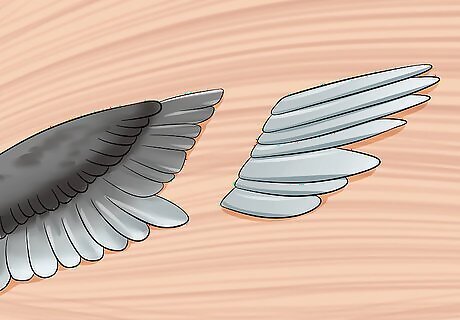
Clip using the traditional method. The old-fashioned way to clip a cockatiel's feathers is to cut all the flight feathers at once, so that the ends of the feathers create a straight line; however, this can leave sharp edges that can injure your bird. Clip the group of feathers you intend to trim all at once, about halfway up the wide part of the feather – as if you were giving the bird a hair cut. Trim the feathers at an angle, to match the length of the covert feathers (the shorter, softer feathers on top.)
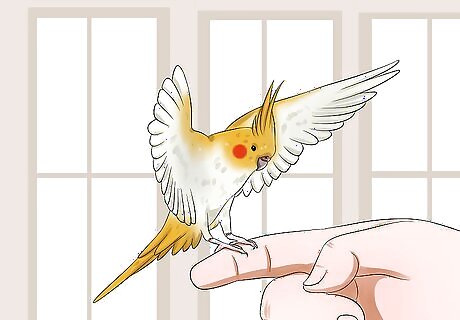
Do a test flight. After clipping four of your cockatiel's primary flights, let her loose for a “test flight.” If she can still attain lift, clip one more flight feather from each wing. Your bird should be able to control drift when released, so she can glide to the floor safely. She should not be able to lift off, however, or remain airborne.
Dealing with Blood Feathers
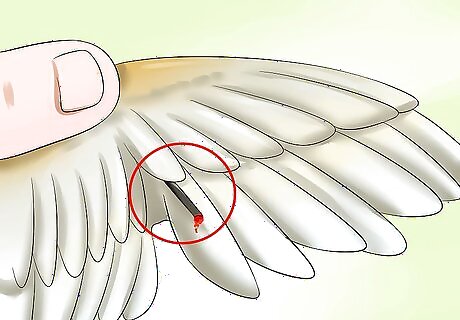
Avoid cutting blood feathers. These are new feathers that are growing in to replace lost feathers. A blood feather contains a vein and an artery, providing blood flow the feather needs to develop. In a cockatiel, blood feathers have a dark purple/blue quill (the tube-shaped portion of the feather). A cockatiel's mature feathers have a pale, opaque, slender quill that does not contain blood. Blood feathers are often sore and tender to the touch, and handling them at all will hurt your bird. Clipping a blood feather can cause serious (potentially fatal) bleeding that may require a veterinarian's attention.
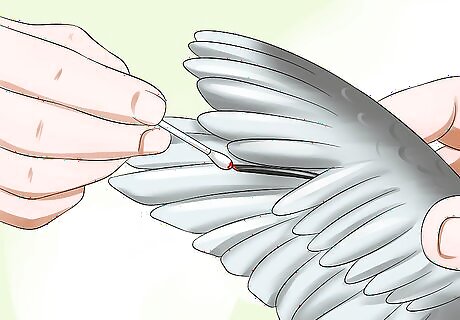
Treat a clipped blood feather. Restrain your bird, and apply pressure to the broken quill shaft with a cotton ball to stop the worst of the bleeding. Apply cornstarch or flour, using a cotton ball or Q-Tip, to the surface of the quill. Do not pack these substances into the feather's shaft. Continue to press firmly until the bleeding stops. You can also use a coagulant like Kwik Stop, available online or at your local pet store. Kwik Stop may sting your bird a little, but it is said to be very effective. It contains a topical anesthetic to treat the pain. When a blood clot forms, be very careful not to disturb it, or the feather will start bleeding again. Return your bird to his cage and watch him closely for at least an hour. If he seems weak or listless, or if the bleeding starts up again, see a vet right away. Even if you successfully stop the bleeding, you may want to take your bird to an avian vet to have the damaged feather completely removed.
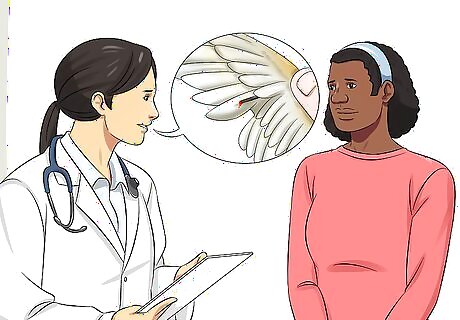
See a vet if the bleeding persists. If you are unable to stop the bleeding with pressure and cornstarch, take your bird to the vet right away. If your pet has a medical condition (such as liver disease) that prevents proper blood clotting, a clipped blood feather should be treated as a life-threatening emergency.




















Comments
0 comment